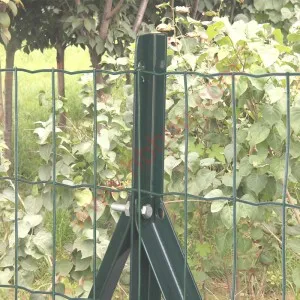Outdoor Plant Stakes Essential Tools for Gardeners
When it comes to gardening, supporting your plants is crucial for ensuring healthy growth and abundant yields. One of the most effective tools for providing that support is the outdoor plant stake. These versatile implements not only help bolster fragile stems but also play a significant role in organizing and maintaining the overall aesthetics of a garden. Understanding the various types of plant stakes and their applications can greatly enhance your gardening experience.
What Are Outdoor Plant Stakes?
Outdoor plant stakes are typically made of durable materials such as wood, metal, or plastic and are designed to provide vertical support to plants. They come in various sizes, shapes, and designs, making them suitable for a wide array of plant types—from small flowers to tall vegetables like tomatoes and sunflowers. The primary function of a plant stake is to keep the plant upright, preventing breakage and promoting better air circulation and sunlight exposure.
Types of Plant Stakes
1. Bamboo Stakes Lightweight and eco-friendly, bamboo stakes are popular among gardeners for their natural appearance and strength. They are an excellent choice for delicate plants, as they provide support without imparting excessive rigidity.
2. Metal Stakes Often made from galvanized steel or aluminum, metal stakes are highly durable and resistant to weathering. These stakes are ideal for robust plants that require strong support, such as climbing beans or large perennials. Some metal stakes come with built-in clips or rings that help secure the plant as it grows.
3. Plastic Stakes Lightweight and often adjustable, plastic stakes are versatile options for various plants. They are easier to handle and can be used in different configurations, making them suitable for temporary arrangements or for less demanding gardening tasks.
4. Decorative Stakes Some gardeners choose decorative stakes that not only provide support but also add aesthetic appeal to their gardens. These might include stakes with colorful designs or those made from wrought iron, which can add charm and character to a plant bed.
outdoor plant stakes

How to Use Plant Stakes Effectively
Using plant stakes properly is essential to maximize their benefits. Here are some tips on how to do so
- Timing It's best to install stakes early in the growing season, ideally before the plants become too tall. This prevents root disturbance and helps the plants adapt to the support structure as they grow.
- Depth Insert the stake into the ground deep enough to provide stability, usually around one-third of its height. This prevents the stake from toppling over during windy conditions or when the plant flexes.
- Tie Securely Use soft ties or garden twine to secure the plant to the stake. Ensure the ties are snug but not too tight, as this can damage the plant’s stems.
- Regular Checks As your plants grow, check the stakes and ties regularly. Adjust them as necessary to accommodate new growth and avoid constricting the plants.
Conclusion
Incorporating plant stakes into your gardening routine is a small but impactful step that can lead to healthier plants and a more organized garden. By choosing the right type of stake and using them effectively, you can support your plants and enhance the beauty of your outdoor space. Whether you're an experienced gardener or just starting out, investing in quality plant stakes is a decision that will yield fruitful results for years to come. As you tend to your garden, remember that a little support goes a long way!
















